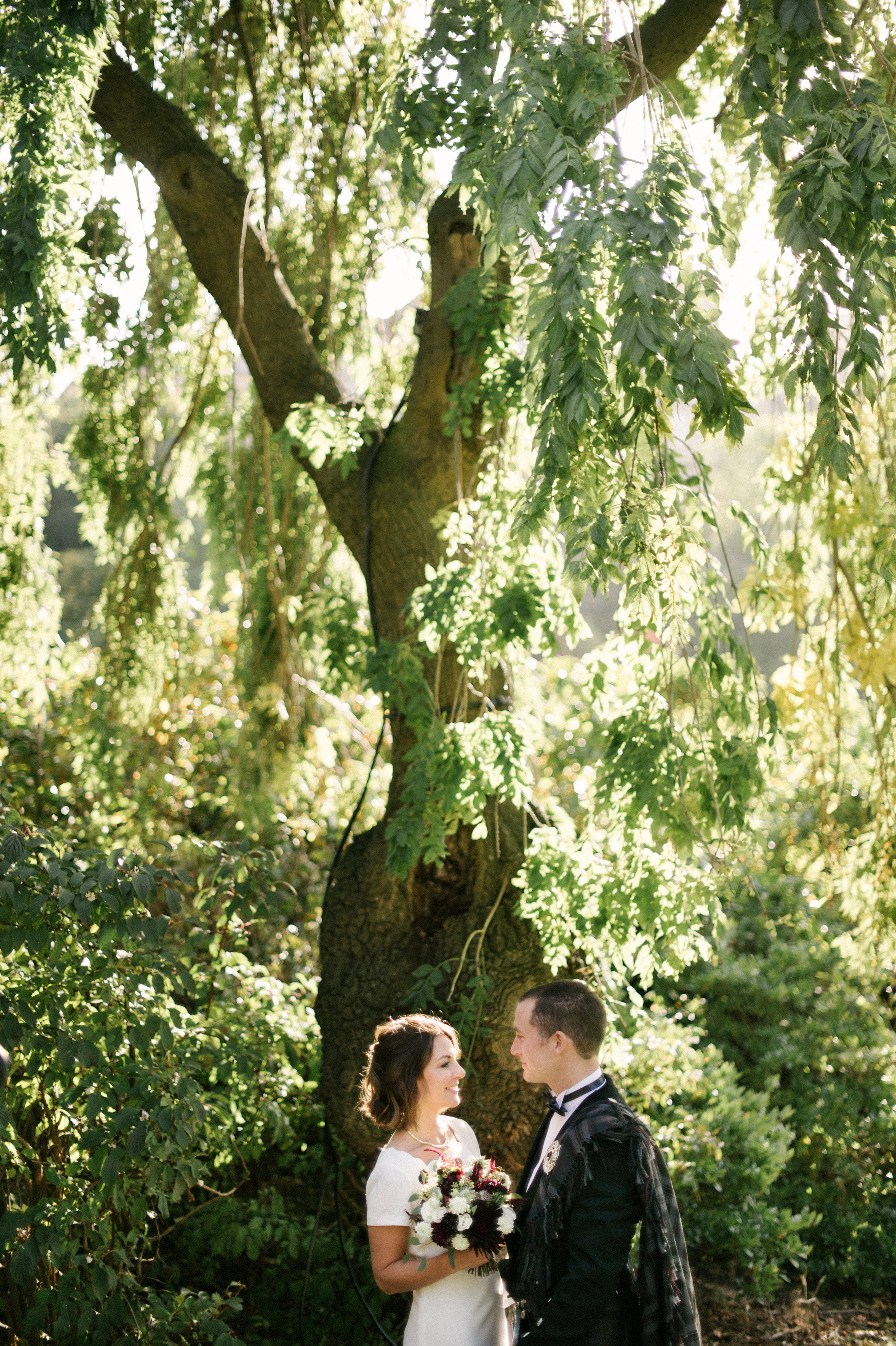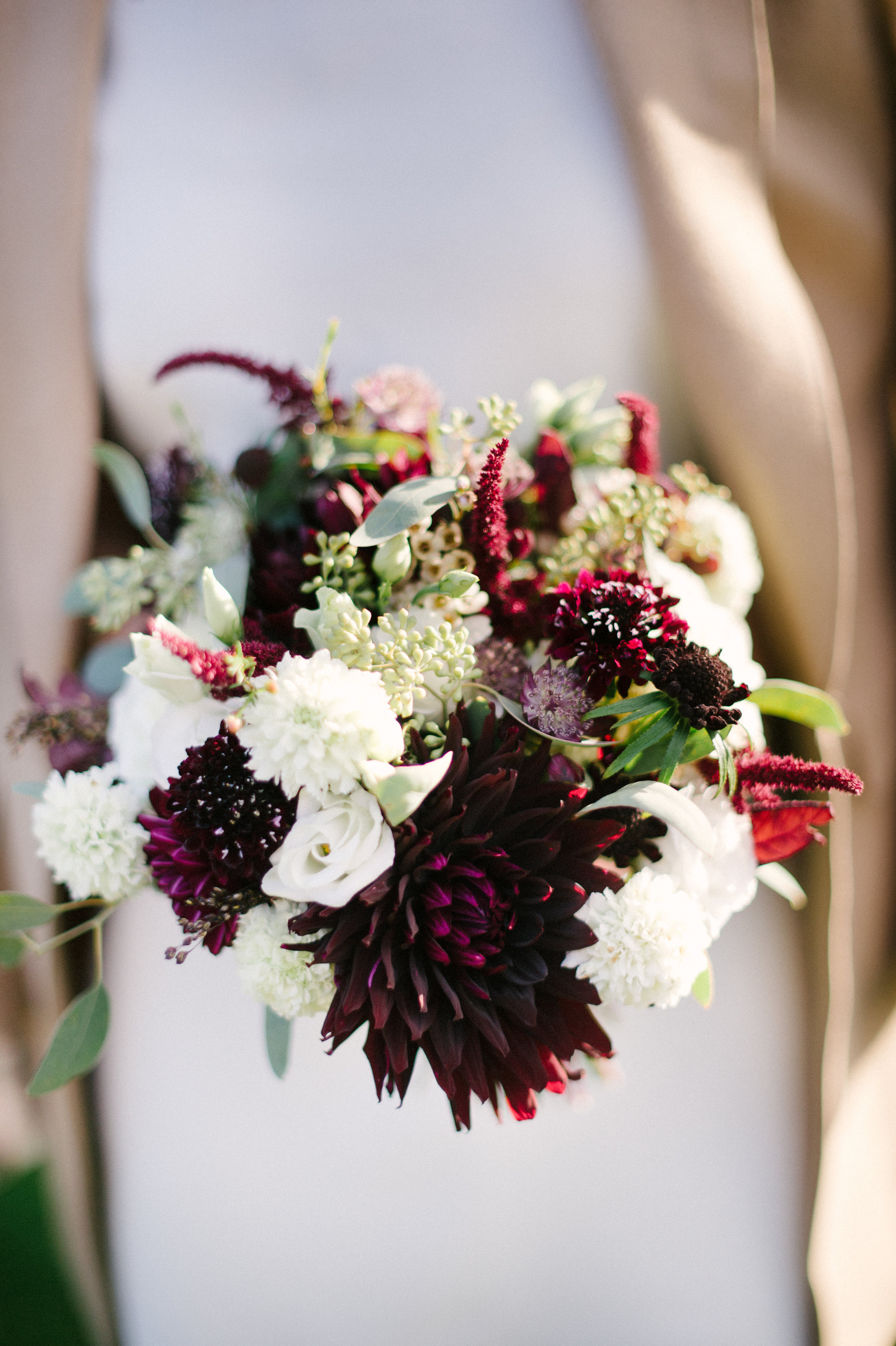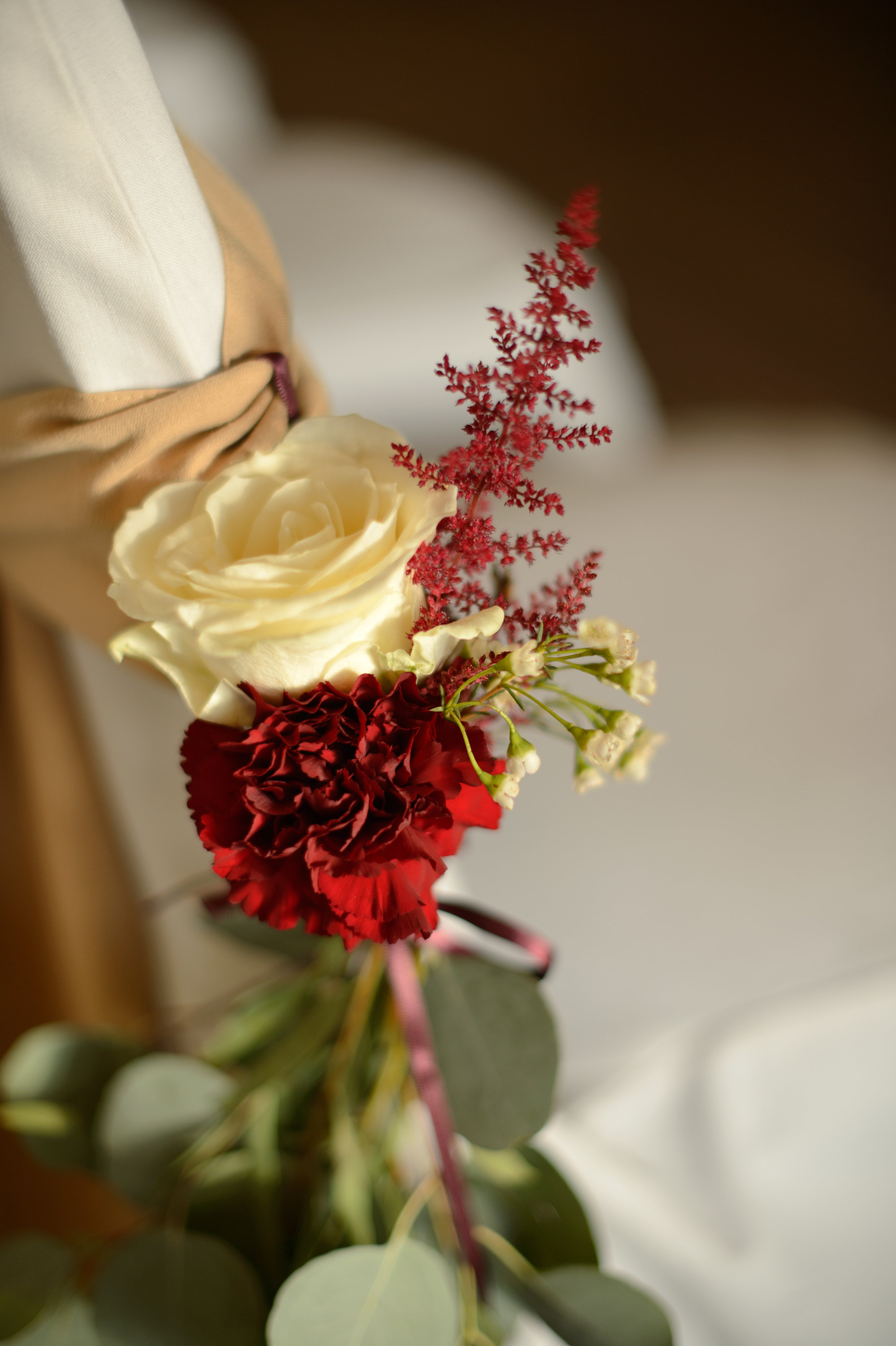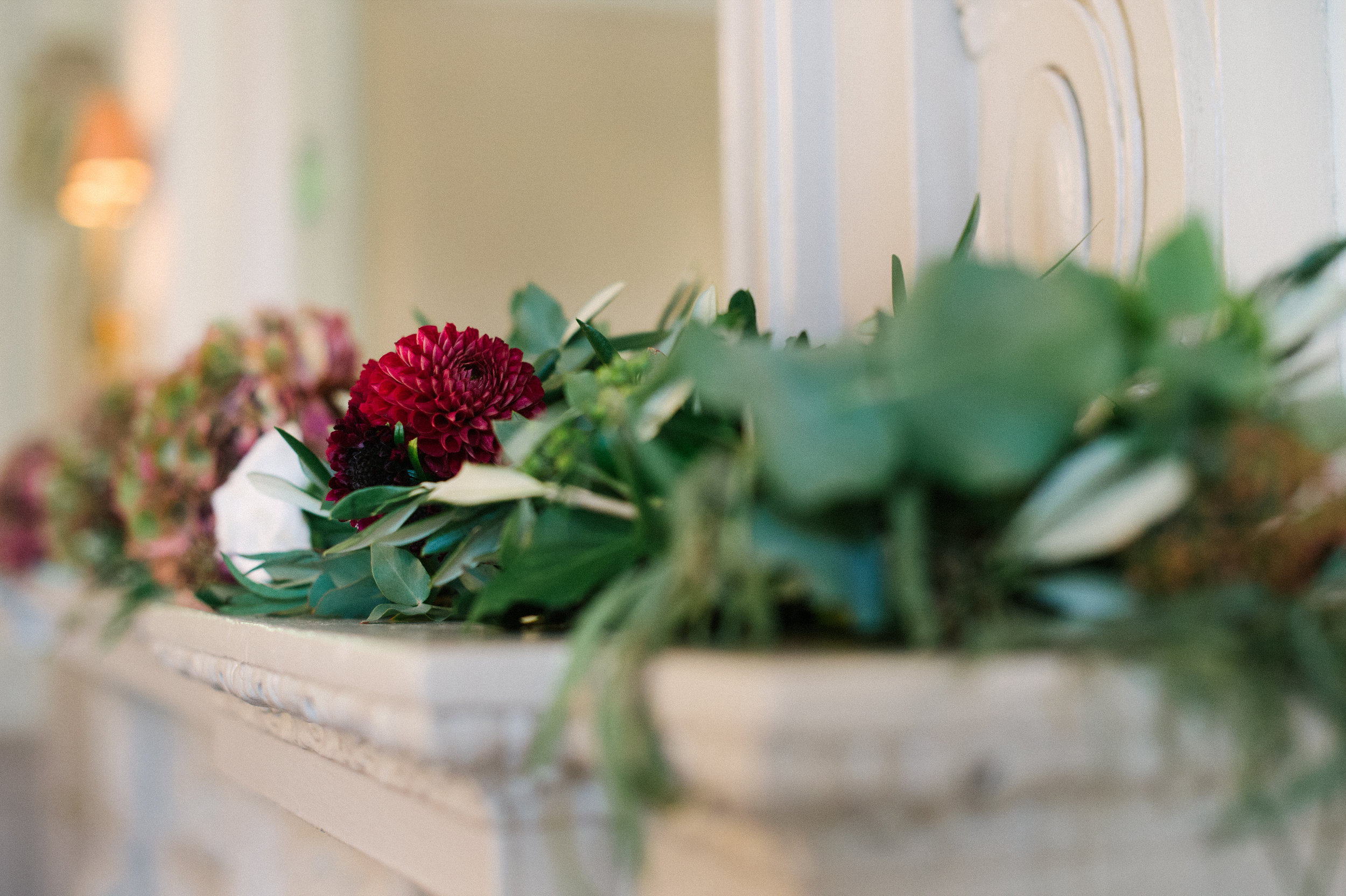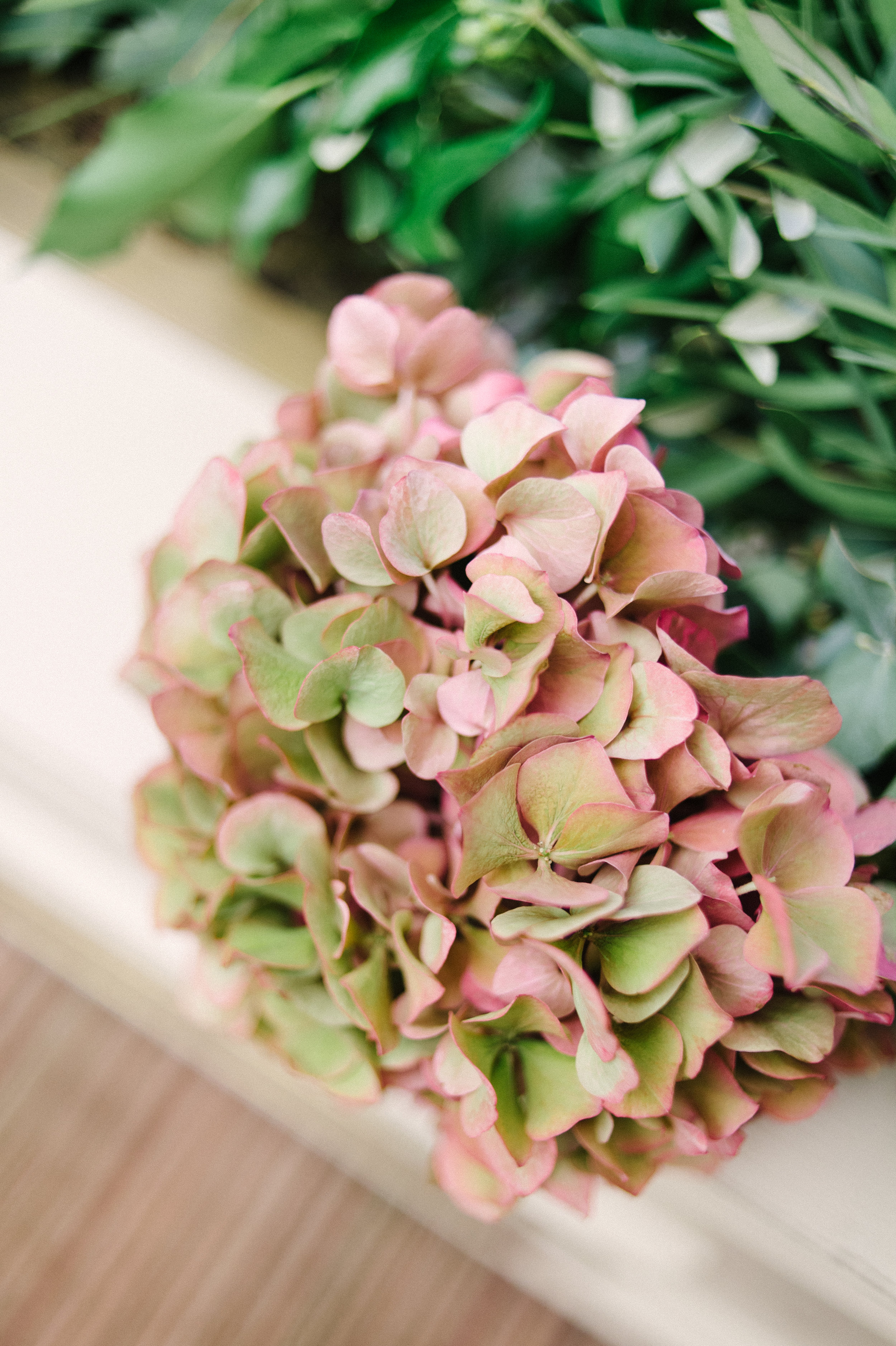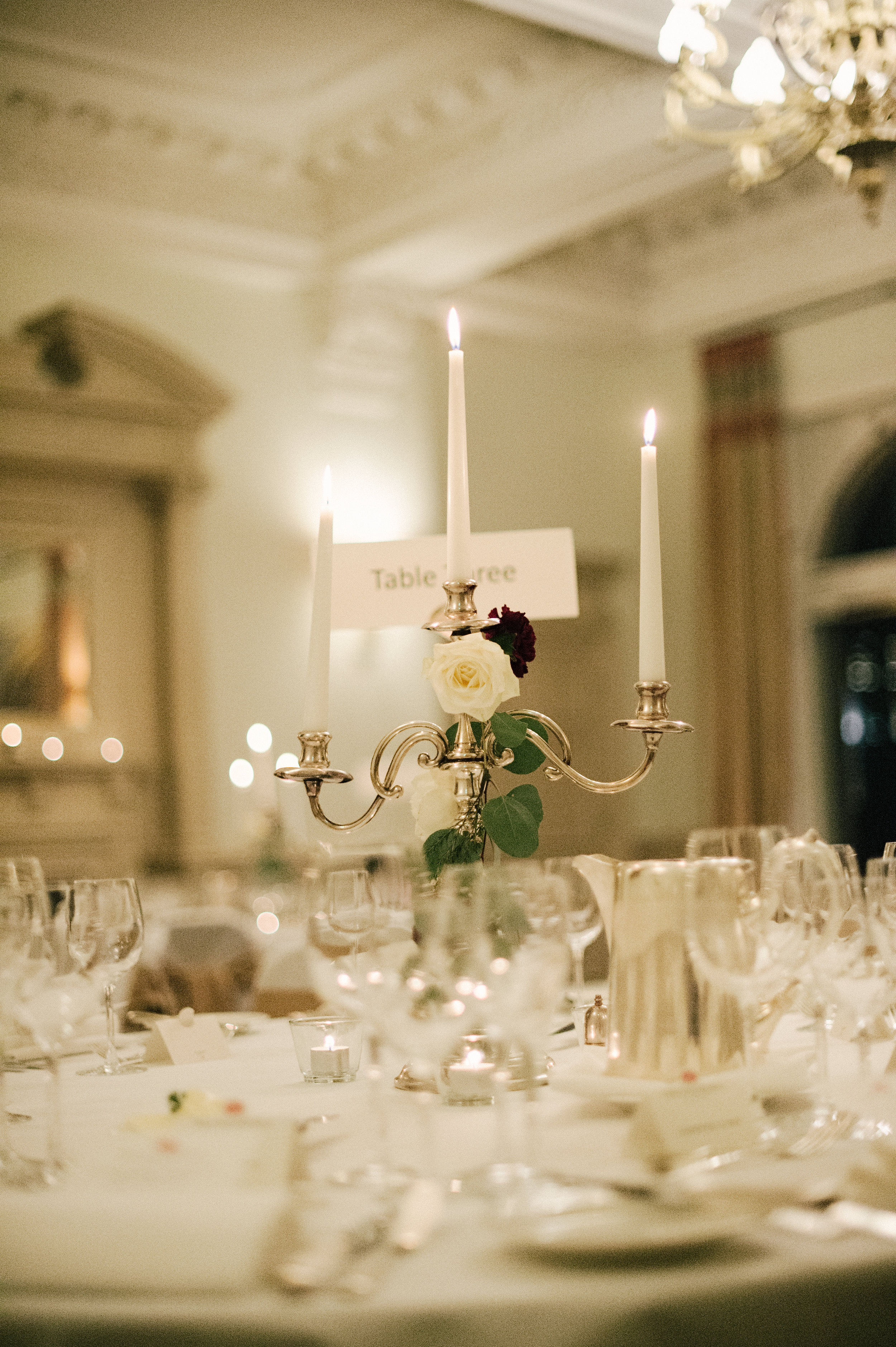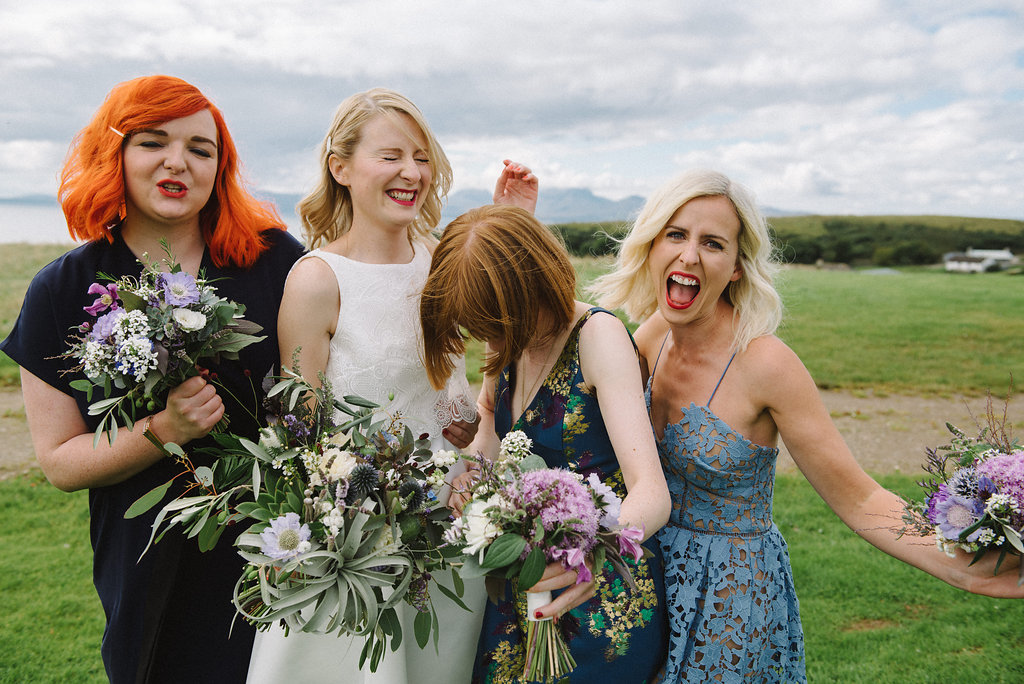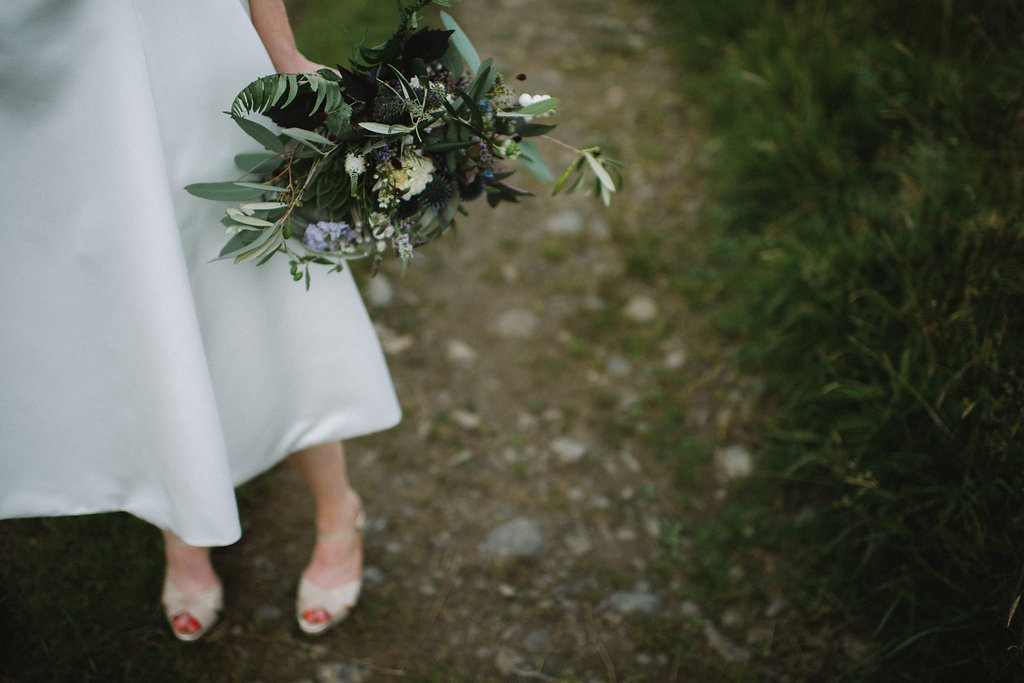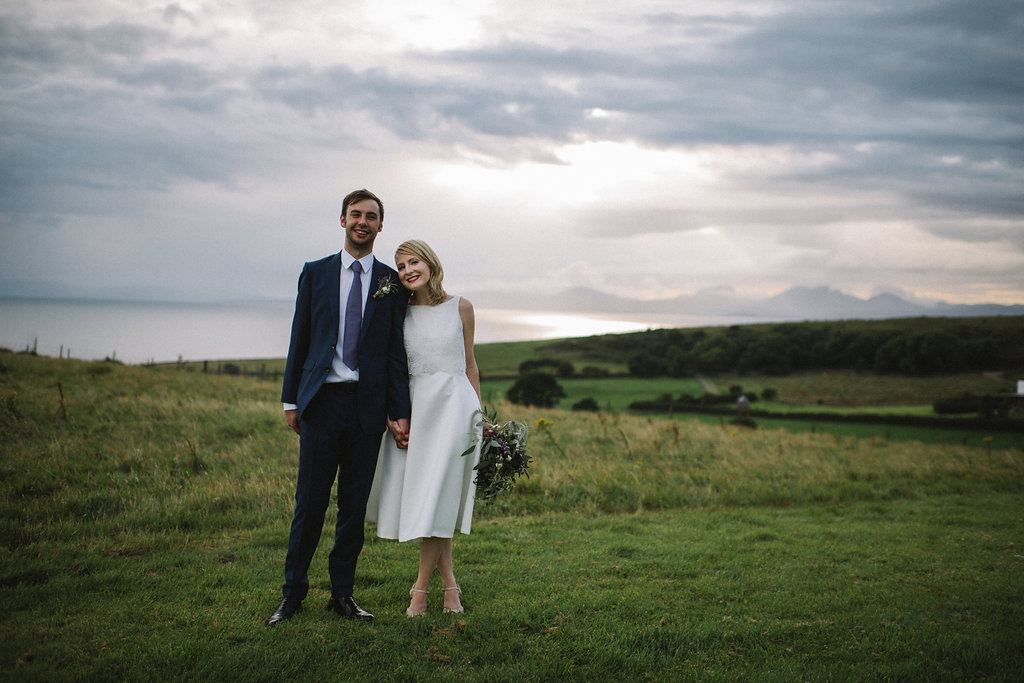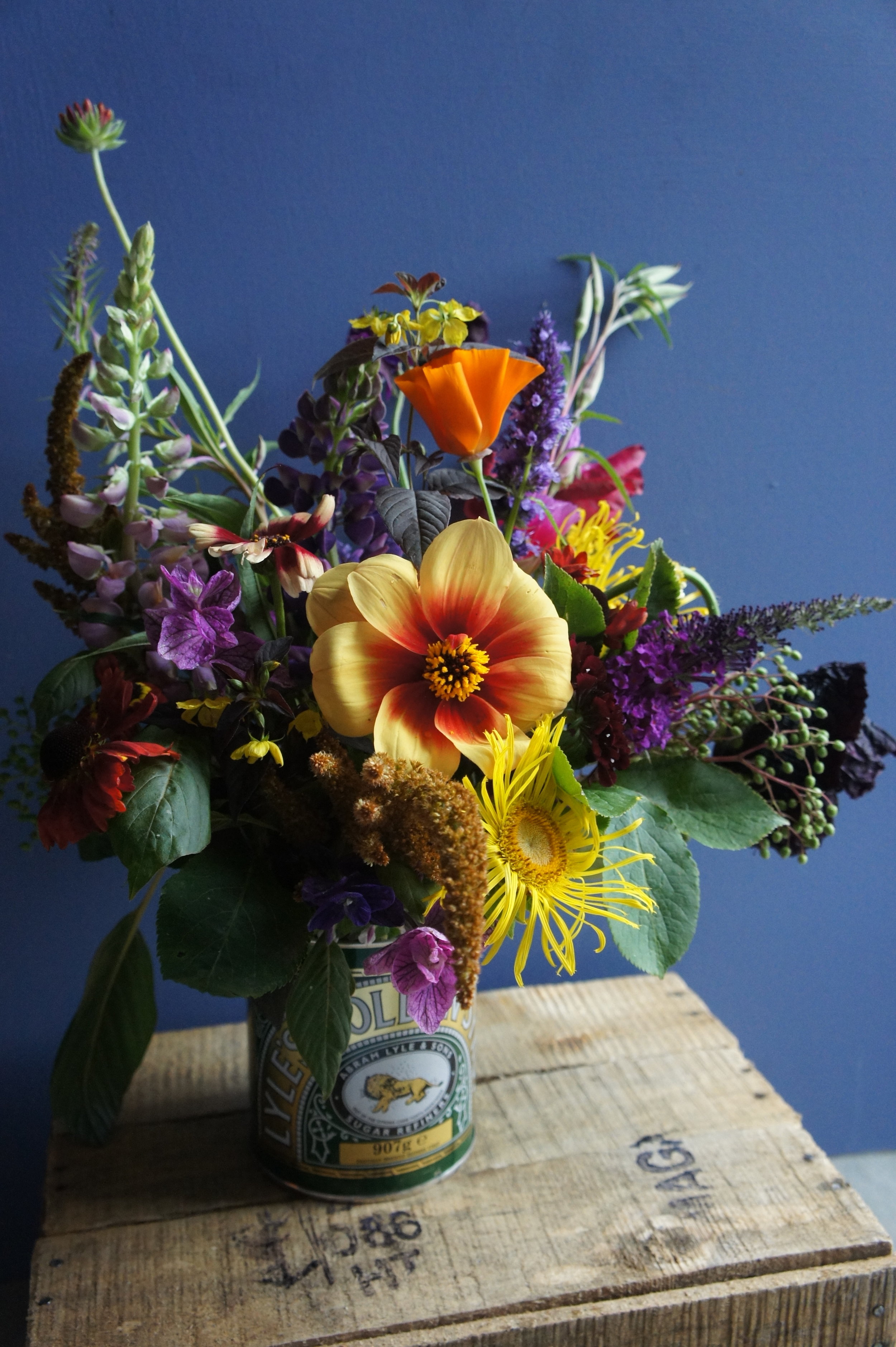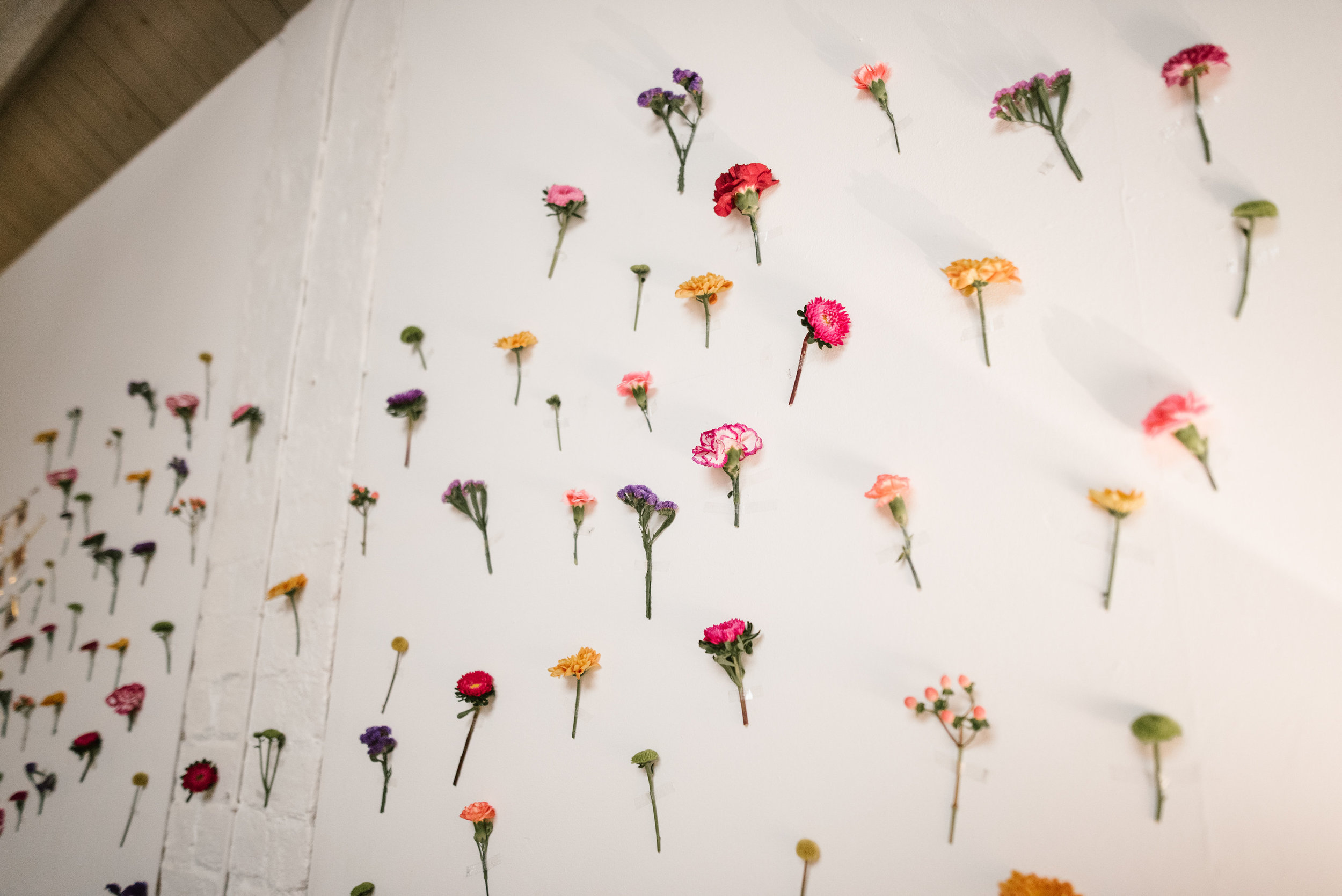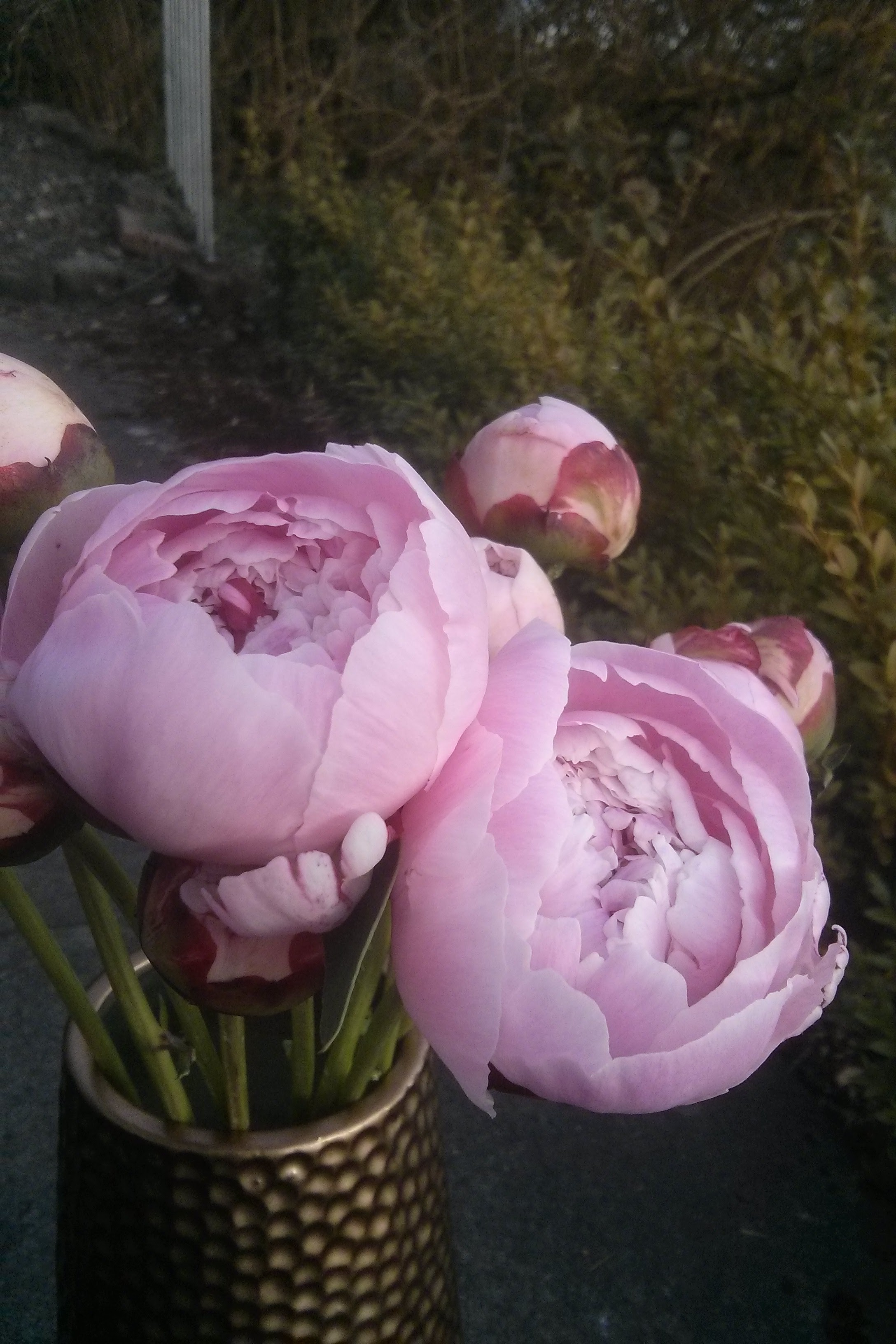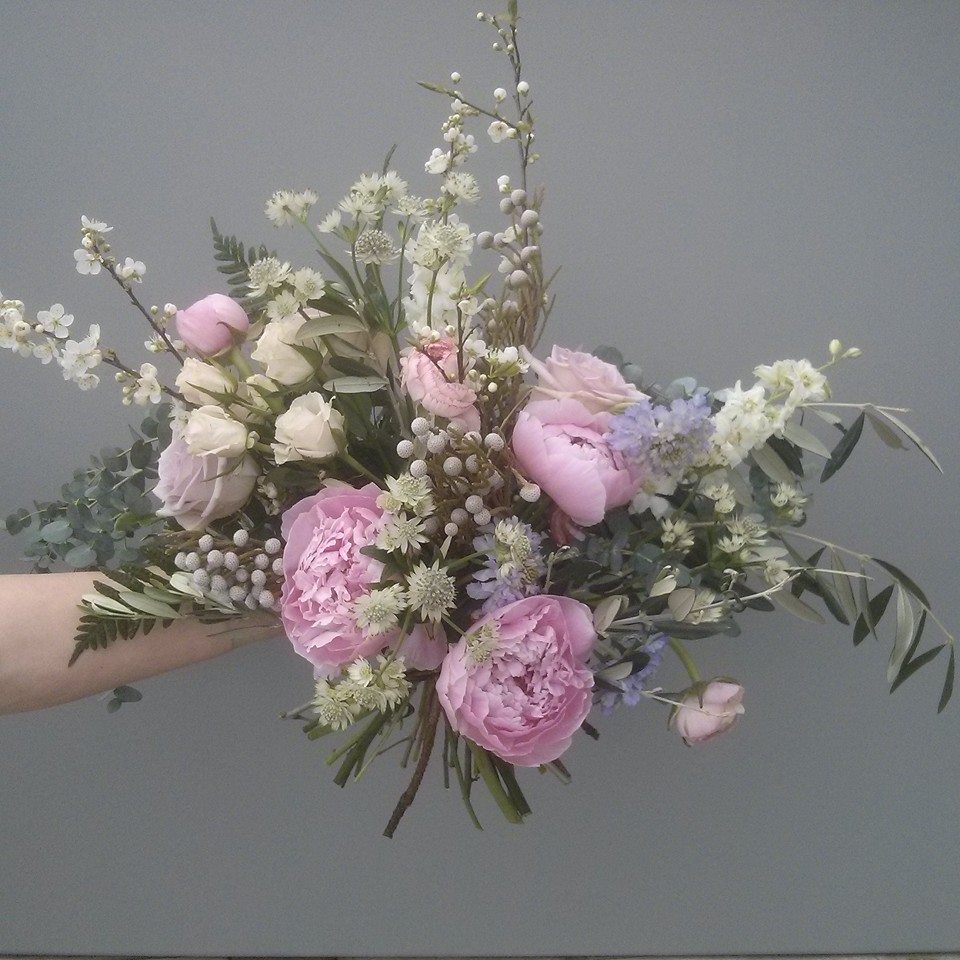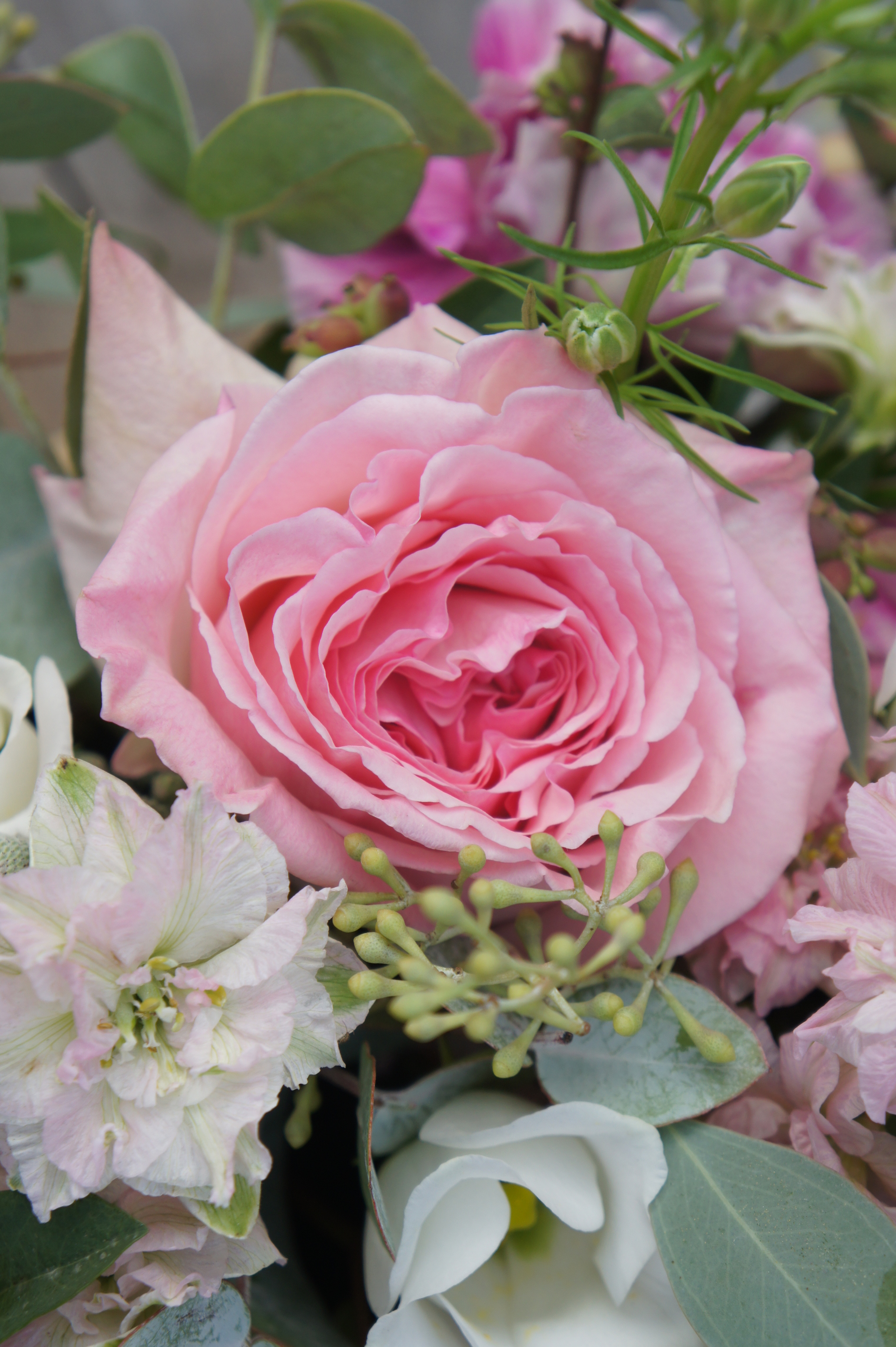Scottish grown wild flowers for a summery micro wedding in the Trossachs
Read MoreColourful Glasgow City Centre Micro Wedding
Trying to decide whether to have a micro wedding or postpone? Take a look at this colourful micro wedding for inspiration
Read MoreWild flower inspiration: spring brights at Riddles Court in Edinburgh
Spring brights were the order of the day for this fun filled Edinburgh wedding in May
Read MoreMarsala wedding 101 - Rosalind and Charly's chic city centre wedding
In 2015 Pantone's colour of the year was Marsala - a sort of burgundy, wine, oxblood tone - and since then I've had a lot of couples look to incorporate this beautiful rich tone into their wedding day. People often like to team it with blush pinks, rose golds and creams, and it is great colour to use if you are thinking of getting married in late summer or autumn.
Often people think that working in a "wild" or "natural" style of floristry means you can't do chic, contemporary or city weddings but last year I had the pleasure of working on Rosalind and Charly's super stylish Edinburgh wedding at the Balmoral.
Rosalind is a stylist and has a fantastic eye for detail, her dress was simple, elegant and chic with a fabulous scalloped edge neckline. She asked me to work in a burgundy / Marsala colour palette with pops of fresh white and eucalyptus to represent her time in Australia.
I used a mixture of Scottish grown flowers from the lovely Paula at Millpond Flower Farm, and imported dutch flowers. As it was an October wedding burgundy was a brilliant colour choice and we used some gorgeous rich dahlias to get the really dark dark wine colour in her bouquet along with amaranthus (which I always love using for its texture), blackberry scoop scabious, astrantia, garden roses, wax flower, eustoma and grasses. I loved the deep tones and different textures of her bouquet and although it was an all round design I still worked in loose and natural style letting the flowers showcase their beauty.
Charly had a buttonhole of succulents, thistle, wax flower and sedum to match in with Rosalind's Marsala bouquet.
We dressed the ceremony and reception rooms at the Balmoral in beautiful garlands of eucalyptus and autumn hydrangea, working with the muted tones of the room furnishings.
Photos by Crofts and Kowalczyk
Fiona and Nial's Crear Wedding
I was lucky enough to work on a really varied set of weddings last year, from bright colour pop warehouse ceremonies, to ethereal woodland weddings, pastel blooms in ancient castles to deep burgundy and marsala in Edinburgh city centre. I love that every couple is unique and while there are trends that run through wedding flower preferences, no two bouquets or arrangements are the same.
One of my favourite weddings from last year was Fiona and Nial's August nuptials, which took place at the beautiful Crear on the west coast of Scotland. Fiona was initially attracted to my terrariums and dinosaurs with air plants in them, and succulents and tillandsia were soon added to the list of ingredients for her wedding flowers!
The muted tones of the Scottish grown flowers were inspired by the colours of the the Scottish landscape. Fiona wanted her bouquet to mirror the tones and textures of the West coast- the sea, sky and mountains. She loved Scandinavian design, clean lines and plants so I used a beautiful tillandsia air-plant as the focus of her bridal bouquet with the unusual lines and colours reminiscent of the sea shore. She could then keep the plant after her wedding as a memento.
Other ingredients included echinops, lavender, mint, dahlia, nigella (also known as love in a mist) and clematis. Her flower girl carried a giant allium head and I added a small tillandsia plant to Nial's buttonhole to tie in with Fiona's bouquet.
For favours Fiona and her mum wrapped mixed succulents in hessian and attached handwritten name tags. I love how the greenery of the foliage, the pale lavender, blue and white tones of the flowers pick out the tones of the landscape and their photographer Lisa Devine has beautifully captured the light and atmosphere of the setting.
A riot of colour - Martha and Craig (and Dotty)
Often flowers are one of the final elements to be chosen for a wedding so when Martha approached me to do her wedding flowers and said she wanted me to set the tone for everything else I was over the moon. Martha and Craig were a dream couple to work with, they were so relaxed and laid back and gave me complete creative freedom with their flowers, fitting in the other decor elements to the designs we came up with at our first meeting. They weren't afraid to try something different, to be bold with colour and design choices, and the result was a riot of colour and fun!
Bridal Party Flowers
Martha didn't want a formal or traditional wedding so instead of a bridal bouquet she opted for a bespoke headpiece and matching wrist corsage. Dotty, her pug, was not left out and I created a fun floral corsage for her to wear at the wedding too! The buttonholes included succulents, craspedia, and strawflower among other materials to fit with the bright and colourful theme of the wedding.
Decor
Because they were getting married at the Woodside Warehouse in Glasgow they effectively had a blank canvas and were keen to fill the unusual space with colour and fun florals. Martha's mum is a textile designer so we combined her striking prints with bold Mexican fiesta colours for the flowers, using lots of funky textures with elements like succulents, leucospermum and craspedia to give an exotic fun feel. Martha is a baker so we filled treacle and golden syrup tins with summer wildflowers and created a foliage table runner dotted with mini succulents.
The ceremony space was dominated by an amazing hanging backdrop of colourful paper cranes that Martha had spent many months making so to complement this we dotted around arrangements of Scottish grown summer flowers such as dahlias, cosmos and poppies in Martha's collected syrup tins.
Next door in the bar area I created a flower wall mixed in with Polaroids of Martha's friend's and family to fill the white walls with a wave of colour.
Bad Ass Buttonholes - more than just an after thought
For many guys buttonholes are a bit of an after thought, something they are told they should wear by mums and partners, but they don’t have to be boring. I always try to make the groom’s buttonhole reflective of the bridal bouquet but also a little special as this is really the groom’s version of a bouquet.
Stories differ as to how the tradition of pinning flowers to your lapel started, but some say that buttonholes date back to ancient Greece. The male wedding party members would wear a small bunch of flowers, usually mixed with fragrant herbs, pinned close to their heart in order to ward off evil spirits. It was believed that these evil spirits would cause the groom to turn his heart against the bride and refuse to love her.
Whatever you believe the origins to be, buttonholes are still popular today, and it is worth noting the story if only to remind you to pin the buttonhole on the left hand side (the same side as your heart ). Other people have said men should wear buttonholes on the left side because women are always right, but I’ll leave that interpretation up to you!
I often get asked how to put on buttonholes and have found this video on YouTube very useful:
Traditionally men would wear a single, rose, carnation or in Scotland a thistle, but nowadays it is much more popular to have a more natural looking gathered style of buttonhole below. These bunched buttonholes suit a more rustic or naturally styled wedding and have the benefit that you can keep them in water (like a mini bouquet) right up until you pin them on. In contrast traditional wired buttonholes cannot go in water but do provide more support (due to the wiring) throughout the day.
When choosing your buttonhole ingredients it’s worth remembering that buttonholes have to put up with a lot. They are pinned on a warm body and often knocked and squished in man hugs throughout the day, so I find using hard elements like succulents, lavender or dried elements mean that your buttonhole survives for longer. Pale flowers and roses can bruise easily, and likewise some off the beautiful images of wildflower buttonholes on Pinterest are misleading as they are taken for a photoshoot but would never last the rigours of a full wedding. Another option is to order two buttonholes for the groom so he can have a pristine version for the official photographs!
Perhaps some of my favourite buttonholes have been a little quirky, for example I had a bride whose bouquet was designed to cascade out of a teapot, her bridesmaids’ bouquets were in teacups and so I used dolls house china to add mini teacups and a teapot to the groom and bridal party’s buttonholes.
Earlier this summer a book loving bride wanted me to include a paper rose in her bouquet taken from the pages of her favourite book so I made a matching mini one to go in her groom’s buttonhole. In other examples I’ve included pine cones, feathers and even scrabble tiles. So when it comes to buttonholes, be creative, it doesn’t have to be boring!
Thanks to Lauren McGlynn Photography who captured my gold and succulent buttonhole at the start of the blog, and The Gibsons for the image of my popular wheat, lavender and thistle buttonhole.
Peony Problems
When talking to brides at consultations or at recent wedding fairs in Glasgow, Edinburgh and Stirling, the word “peony” has loomed large. Undoubtedly a beautiful flower, and one of the most popular luxury wedding flowers, many brides have their hearts set on this bloom for their wedding bouquet. Unfortunately, as with many beautiful ephemeral things, it has a very short season, making it all the more precious. Its peak season falls between April and June, but this year I have seen beautiful peonies at the flower market from early March, and last year there were peonies well into July. They go hand in hand with blousey full-bloomed roses to give a sense of stately home elegance and they have an amazing heady scent.
This beautiful flower is full of diva-like habits and can strike fear into the heart of many florists as they are notoriously capricious. Often a number of stems per wrap will never open at all, despite the ministrations of panicking florists equipped with warm water and hairdryers. Other times they will unfurl their taffeta skirts all too soon and be ready to dance before the day of the wedding. Because of this your florist might over order the number of peonies needed so they will have enough usable stems.
That said, they are definitely the stars of the show in a bouquet, the prima ballerina of any arrangement, despite their Victorian flower meaning of “bashfulness”. So it is always difficult when a bride full of enthusiasm for peonies then reveals her wedding date is out of peony season. However all is not lost, there are many alternatives to peonies which work well in natural, classic and rustic bouquets at other times of year. Perhaps the first step is to think about what it is about the peony that charms you.
If it is the big headed round shape consider using Ranunculus or double tulips in spring. You might also like David Austin roses for their ruffles and spirals of petals. Or if you love the scent, try something like Matthiola to capture the perfume of summer. Whatever it is that attracts you, there are plenty of alternatives out there.







